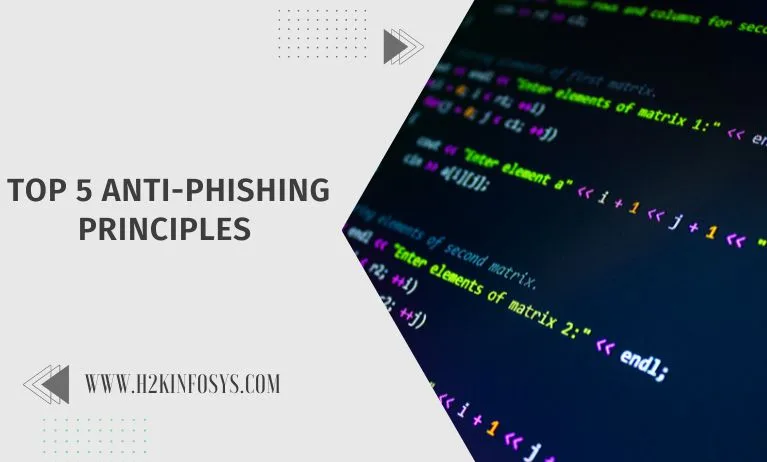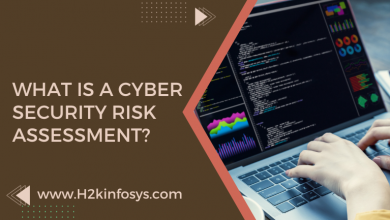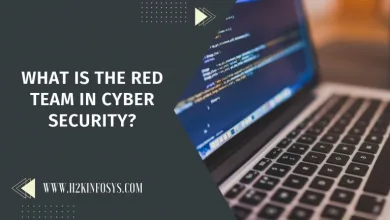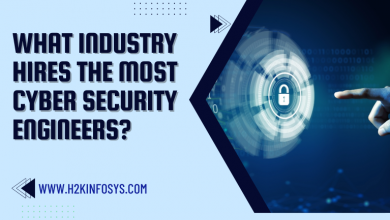Top 5 Anti-Phishing Principles

One of the most popular ways for cybercriminals to infiltrate a company’s network and take employee login information is through Anti-Phishing emails. Because they are relatively simple to carry out and frequently have a high success rate, phishing attacks like these are very common among cybercriminals. This is especially true when contrasted to finding and exploiting a weakness in the target network. A thorough anti-phishing plan is needed to combat the phishing threat. An organisation’s exposure to phishing assaults can be significantly decreased by using the five anti-phishing concepts listed below. You can check out the online cyber security training to learn more about Anti-Phishing.
1.Educate Employees About Current Phishing Threats
Phishing attacks take advantage of people’s tendencies to fall for tricks in order to gain what they seek. The likelihood that the target will act without fully validating the email is increased by common strategies like instilling a sense of urgency and providing the email recipient with something they want.
Phishers frequently use current events or fake well-known companies in their emails to make them seem more authentic. These emails boost their chances of being clicked on by providing details, products, or opportunities relating to a recent occurrence or by making the receiver think something is wrong (for example, by sending a phoney item arrival notification).
Cybercriminals frequently adapt their pretexts and phishing methods to make their attacks appear legitimate. Employees ought to be trained on current phishing trends to increase the probability that they can identify and properly respond to phishing attacks.
2.Teach Employees to Report Suspicious Emails
The majority of phishing attempts do not specifically target any one firm employee. Instead, a hacker will send numerous emails, possibly even going through the organisation’s whole email directory alphabetically. Such a mass attack boosts the attacker’s chances of success because all it takes is one victim to fall for a fraud.

Employees should be taught to report any emails they believe to be phishing scams for this reason. One worker might not fall for the phish, but another might. Delete malicious emails before they are opened, remove malware, and reset passwords for compromised users if the IT/security team is made aware of the assault.
3.Inform Employees About Corporate Email Policies
Every business should have an email security policy that specifies appropriate email (and other communications solutions) usage and anti-phishing guidelines. This policy ought to outline acceptable and inappropriate usage as well as how to counter such attacks (by alerting IT to suspicious emails and removing any content that is known to be phishing).
As part of the company’s cybersecurity awareness training, the email policy should be constantly evaluated. This makes sure that staff are aware of the policy’s requirements through repetition. Employees that are familiar with a business policy are more likely to react to an assault effectively and stop it from succeeding.
4.Review Password Security Best Practices
One of the main things that fraudsters are after is user credentials. Since an attacker can pretend to be a legitimate user if they have access to an employee’s password, it may be harder to identify ongoing attacks. Employees frequently use the same password for many online accounts, which means that if one password is compromised, an attacker will have access to multiple of the employee’s online accounts.
Due to this, phishing emails frequently target credential theft. It’s critical to inform staff members of the danger posed by phishing emails and the recommended practices for password security. They should never discuss passwords (particularly over email), use distinct, strong passwords for all of their accounts, and never enter a password into a website reached by a link that was sent via email.
5.Deploy an Automated Anti-Phishing Solution
Employee cybersecurity training won’t always offer complete defence against phishing attempts, despite an organisation’s best efforts. These assaults are getting more and more complex, and in some situations, they even manage to fool cybersecurity professionals. The frequency of successful phishing assaults against the company can be decreased through phishing education, but some emails will probably still go through.

AI-based anti-phishing software that can recognize and block phishing content across all of the organisation’s communication services (email, productivity applications, etc.) and platforms (employee workstations, mobile devices, etc.) is necessary to reduce the risk of phishing attacks on the organisation. Since phishing content can appear on any platform and employees may be more susceptible to attacks when utilising mobile devices, thorough coverage is required.
Managing the Phishing Threat
Making employees aware of the anti-phishing principles and using a powerful anti-phishing solution are both essential components of a comprehensive anti-phishing strategy that will protect against phishing attempts. The likelihood that a worker may fall for a phishing email and expose the company to attacks can be decreased by an AI-based phishing detection solution.
Conclusion
In an organisation, Anti-Phishing is possible if the principles required are well practised. Check out the online cyber security course to learn more.





